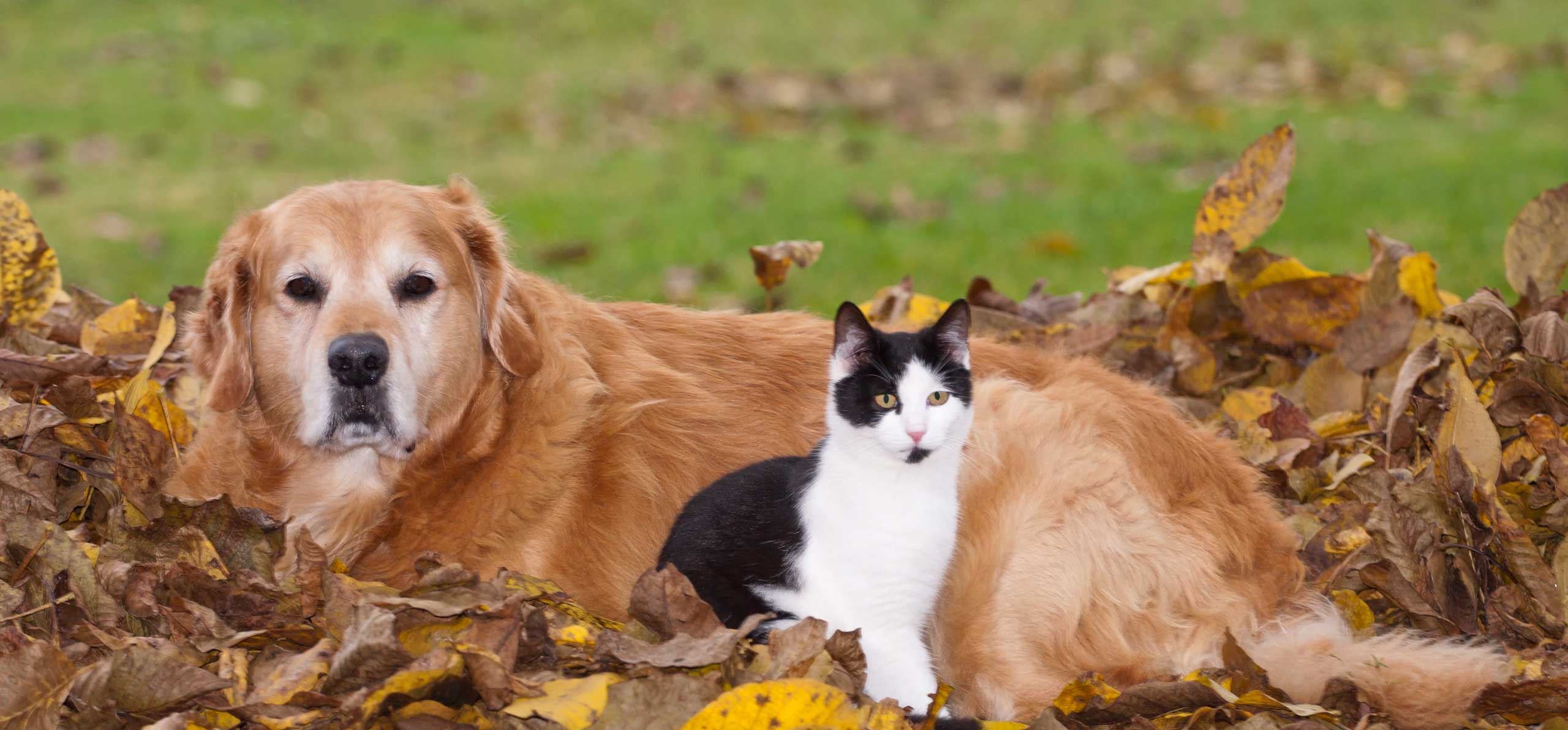1. Watch Out for Toxic Foods for Pets
Leaf peeping along wooded trails or picking apples are autumnal rites; they’re not, however, the best activities to share with your dog. Dogs descended from one of the best hunters/scavengers around, so they’ll naturally wander with their snouts to the ground, invariably wolfing down undesirable items along the way.
Avoid treating your pet to these fall staples as they can cause intestinal problems or could be toxic:
- Apple peels
- Stems
- Leaves
- Mushrooms
- Candy
As for those longer fall hikes, avoid walking your dog where mushrooms flourish. Although they have highly evolved noses, dogs can’t sniff out safe mushrooms from toxic ones. If you notice vomiting, diarrhea, signs of dehydration, or a rapid heart rate or fever, contact your veterinarian immediately; it could mean your dog got into some bad ‘shrooms.
If you suspect your pet has ingested anything toxic, and your family veterinarian isn’t available, find a 24-hour veterinarian clinic ASAP. You can also call ASPCA Animal Poison Control 24/7 at 888-426-4435, or the Pet Poison Hotline at 855-764-7661 (note: there is a fee for their service).
2. Keep School Supplies Away from Pets
School-aged kids often leave a trail of school supplies behind that, to pets, may look like chew toys. Stow permanent markers, pencils and pens, and any other potential choking hazard, out of paw’s reach.
Also, some dogs have acquired a taste for paste, which can cause gastrointestinal blockage, so hide heavily glued homework projects. This also goes for maintenance projects entailing glue or adhesives, like laying linoleum floors; in such cases keep your dog or cat confined to other rooms until your renovations are complete.
3. Protect Your Pet from Snake Bites
Snakes start hibernating in the fall, which is when they’re more likely to strike. Check the CDC.gov site for areas where venomous snakes reside and keep curious pets away.
4. Keep Halloween Candy Out of Reach
Halloween marks the start of the high-carb season, so remember to be extra vigilant watching your pets around sweets.
Unfortunately, dogs love chocolate as much as humans do, though some of us, thankfully, don’t share the same toxic reaction. The rich, flavorful smell of cocoa beans will command your dog’s attention quickly, so don’t leave candy bowls or chocolate-strewn counters unattended. If your pooch accidentally gets into the chocolate cache, contact your veterinarian immediately.
Xylitol, a sweetener found in many sugar-free gums and candies, is also extremely toxic for dogs and cats. And stick candies, like lollipops, can choke pets or cause painful obstructions, so dispose of them carefully. Also, toss candy wrappers out immediately so your pet can’t chew and possibly choke on them.
If depriving your pet of seasonal sweets makes you feel like a witch, try tasty, pet-safe treats that are equally nutritious any time of year for dogs and cats.
5. Choose Safe Halloween Costumes for Pets
It’s also the season we show off our adorable furry kids in costumes. Keep Halloween getups simple: Pets can become entangled by elaborate regalia with strings, belts, sashes, or small, movable parts and accidentally choke or even strangle themselves.
Always stay by your costumed pet’s side to be sure they don’t swallow anything harmful should they start chewing their decorative duds.
6. Use Pet-Friendly Halloween Decorations
Those dangling skeleton lights may be festive but can kitty bat them with her paws? Halloween’s one of the most highly decorated events, so keep your pet’s perspective in mind and make safe choices. Remember, your cat loves tabletops and counters where lit candles can easily topple. To avoid fires, use flameless, battery-operated candles instead.
7. Reduce Stress for Your Pets During Trick-Or-Treating
Halloween’s supposed to be spooky, but if you hand out candy, all the noise from clamoring kids, ringing doorbells, and strangers in weird costumes can make pets skittish.
We all know about curiosity and the cat, but your dog may want to sniff out the situation even more than your cat, who’ll often hide under a favorite couch.
Watch your dog’s reaction to the first trick-or-treaters. If he appears anxious, barks a lot or seems agitated, put up a gate to keep him in another room. If the ghouls and goblins don’t faze him, maybe he can help dole out candy — under close supervision, of course.
8. Don’t Forget To Microchip Your Pet
Doors may open and close a lot on Halloween, so keep tabs on your cat or dog at all times. Indoor felines might be especially curious and use the distracting mayhem to slip out the door. The last thing you want is to wander the neighborhood in search of missing pets.
If you’re taking costumed dogs or cats to a party, always leash them. It’s best to have your dog or cat wear their collars and IDs inside, in case they sneak out. After all, now that the days are shorter and the nights are growing darker, it’s harder to find pets if they’re separated from you.
That’s why fall is a great time to get your cat or dog microchipped, if you haven’t done so already. ID tags and microchips can help bring your best friend home safely — and there’s nothing sweeter than that.

